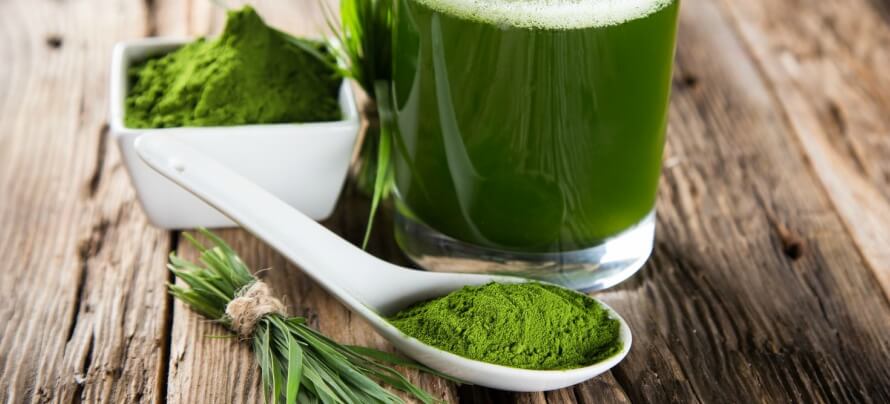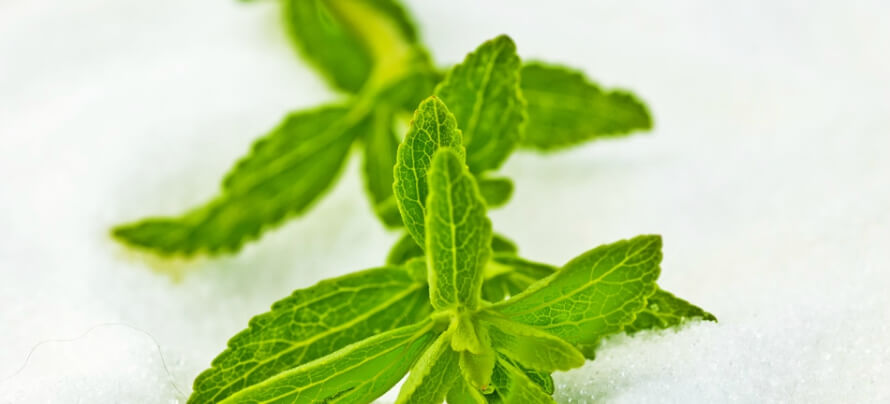Key Takeaways
- In the competitive marketplace of sports supplements, one way to stand out from the pack is to include new, unique herbs.
- An herbal supplement should have evidence showing that it works in humans and isn’t dangerous.
- Most herbs don’t have that kind of evidence behind them, and are used just for marketing purposes, or worse, to mask other unsafe ingredients.
When you head to a store, be it brick-and-mortar or online, you tend to see a large amount of amino acids being sold.
Of all the words abused in the field of supplements and wellness, “natural” is by far the worst offender.
It is an inherently meaningless term; a word used to categorize something without actually saying anything important about it.
Safe? Effective? Practical? Cheap? The word “natural” does not actually mean any of those things, and “synthetic” doesn’t fit the bill either. If we were to say that an ingredient is “researched in humans,” that at least implies some degree of safety but, “natural?”
Not to mention that, according to the Dietary Supplement Health and Education Act (DSHEA), anything that is sold as a dietary supplement needs to exist in nature in some manner. It can be argued that all dietary supplements are natural.
But alas, despite being a meaningless term it still has quite a degree of power associated with it. As a result, it is, sadly, sort of foolish for any company to not make mention of whether something is naturally sourced or not.
Of course, there’s simply stating that something is natural and then there’s playing off of the false idea that natural is better than something else.
We see this quite often in supplements that need an “edge” in a competitive market. This is such a common tactic there’s even a name for it–the naturalistic fallacy.
And quite frequently that “edge” has the name of an herb.
Why is that?
Well…
- Supplements Need to Stand Out
- How Do Companies Make Their Supplements “Unique?”
- When Herbs Can Be Good
- When Herbs Aren’t Worthwhile
- Herbs Used as Camouflage
- What Does This Mean for You?
- The Bottom Line on Herbs in Supplements
Table of Contents
+Supplements Need to Stand Out
Composition, price, and brand power; these are the things help set some supplements apart from others. While brand power has a large amount of variance to it, the other two are somewhat more restricted.
When it comes to price, a company cannot simply sell expensive components for cheap without going in the red, nor can they sell cheap components for a large margin without being outcompeted by other companies.
For composition it’s not like everything works. While there will be variance from one product to the next, eventually most supplements that work in a category (pre-workout, fat-burner, etc.) will be very similar.
Pre-workouts contain stimulants, citrulline is consistently replacing arginine, and companies continually fall back on whey protein; it’s simply because these things are better than other things and the science we have on the matter is fairly clear.
But if a combination of creatine, beta-alanine, and citrulline is a good pre-workout supplement, then pretty much any company would have them in a supplement. Nothing interesting and nothing that really stands out.
Sure, you can add some taurine, but despite it being a nice inclusion it’s just boring. It’s been in energy drinks for a long time and doesn’t have that impact, you know?
So how do products stand out from one another, and do these changes make the product better?
Could they make it worse?
How Do Companies Make Their Supplements “Unique?”

The first way to make a product unique is simply changing the dosage.
Most supplements have a single “ideal” dose but, for many supplements that influence skeletal muscle, the “ideal” dose actually changes depending on who you are as a person; how big you are, how fast your metabolism is, etc.
It is impossible to make a supplement that provides multiple components that can be accurately dosed at something like 0.05g/kg body weight and have all customers use it correctly. The act of taking a single scoop before a workout is simpler than measuring everything on a scale.
So scientists, and many companies, just assume an average body weight and put supplements in their products based on that. You will most likely see creatine dosed in the range of 5-10g per serving, but it’s theoretically possible that more could be better for bigger people.
Other companies add compounds in lower than active doses as sort of a “filler.” Couldn’t afford to put a full dose in there but, hey, half a dose is better than nothing!
Of course, some companies do underdose intentionally to increase profit margins. It’s always best to double check the dose of everything in a product.
Companies also use new variants of supplements to try to make them new and exciting.
There are more variants of creatine than any other sports supplement. Most of these variants are no longer sold simply because they outright failed (creatine ethyl ester, liquid creatine) or they just didn’t sell well enough, but we still have quite a few on the market.
Creatine monohydrate, micronized creatine, creatine magnesium chelate, creatine nitrate; they all work. None are really better than the other but, hey, that magnesium chelate looks good on the label and you get a bit of magnesium to boot!
And if the first two don’t work then there is always one last trick up the sleeve to make your label look unique.
Companies can also opt to use a ‘Proprietary Blend’ on their label.
Proprietary blends refer to when you look at a label, see multiple ingredients, and rather than each of them having a dose they are grouped up under a fancy name. The collection of the molecules are all dosed together rather than individually.
Going back to the creatine, beta-alanine, and citrulline example let’s just say that we use 5 grams, 4.8 grams, and 6 grams respectively. If they were in a proprietary blend then the only information you would have is that the three of them, together, are 15.8 grams.
Of course, the label would look the same if you used 15 grams of creatine, 700 mg of beta-alanine, and 100 mg of citrulline. It just gets tallied up as 15.8 grams.
Of course, since dosage of individual ingredients is not listed in proprietary blends, they serve no benefit to the consumer, and that’s a major reason we don’t use them in our products at Legion.
For example, L-DOPA looks good on a label, but nobody would buy it if there was only 50 mg of it. Proprietary blends could hide that dosing information.
Playing around with supplement dose is fine as long as it’s listed on the label.
Using new forms of supplements is fine if it has evidence of working.
Proprietary blends, not so good.
What is unexpected, however, is that due to the nature of herbs not legally requiring the active component to be listed they’re often similar in practice to proprietary blends.
When Herbs Can Be Good
Before we continue in this section I want to make something clear. Herbal supplements should be seen as little vegetables.
I say this because citrulline will always be citrulline and, if it doesn’t the name itself changes to say what happened to it. If you decide to use L-Citrulline L-Malate the name itself shows you that malic acid was added; you can actually math out how much citrulline and malic acid is in that one; 57% citrulline by weight, just because the name is crystal clear.
For herbals however, the amount of active ingredients change each batch. Sometimes there’s more active ingredients, sometimes less, sometimes something went wrong with the soil quality and the micronutrients are all out of line.
That uncertainty is why, every time an herbal supplement shows potential benefit to medical usage, they try to isolate the active ingredient and control the dose. It’s why you buy Aspirin rather than eating white willow bark straight. With Aspirin, you know exactly what you’re getting and in what amount consistently.
It’s also why you see many herbal supplements with standardizations. When a St. John’s wort supplement is followed by the phrase “0.3% hypericin” that’s how you get consistency from one batch of herbs to the next; assuming what they standardize and mention on the label is the active ingredient.
Standardization is only the start to being a scientifically proven herb, however. There are a few things that should be accomplished first like:
1. There should be some evidence that what is being standardized is actually the thing we want.
Using bacopa monnieri as an example here, research on bacosides themselves show them linked to anti-inflammation, anti-depression, and membrane protection. A very relevant study for this topic is this one right here where the main question was “are the bacosides the reason for bacopa’s effects?” and then they assessed it.
There’s still a lot more to learn about individual bacosides but, ultimately, we know the bacosides are doing the thing we want.
And that’s why bacopa supplements have ‘55% bacosides’ or something after it. It’s the manufacturers trying to make certain that the good stuff is there in consistent levels.
2. There should be human studies, using a similar standardization, showing that the herb does the thing we want it to.
The standardized dose of 55% bacosides from 300 mg, or a similar level of bacosides, has consistently been used in studies where bacopa exerts positive effects on memory in humans.
3. It should have an acceptable level of safety associated with it.
The above human studies, and many more, show mild intestinal irritation as the worst side-effect in a subset of users.
Basically, herbs are good when they tell you what’s in them and at what dose and this information is similar to human studies testing the herb.
Now, why am I saying all the above when it should be obvious? It’s because it’s not commonly practiced, particularly when it comes to popular supplement categories that routinely underperform.
When Herbs Aren’t Worthwhile

Let’s look at testosterone boosters, standing alongside pre-workout supplements as the main culprits of treating herbs like nothing more than pretty names.
Basella alba and hibiscus macranthus, bryonia laciniosa, bulbine natalensis, cordyceps, dactylorhiza hatagirea, eucommia ulmoides, fadogia agrestis, pentadiplandra brazzeana, holy basil, horny goat weed, massularia acuminata, pedalium murex, royal jelly, and spilanthese acmella are all herbs with positive animal evidence for increasing testosterone.
Asparagus racemosus, anacyclus pyrenthrum, chlorophytum borivilianum, and tunera diffusa also appear to have aphrodisiac properties, but we don’t know if that’s thanks to raising testosterone.
Notice how some major players like tribulus terrestris, eurycoma longjack, and fenugreek are missing from the above list? It’s because the above is a non comprehensive list of things that do not have human evidence. Those three herbs don’t work, either, but at least they’ve been tested.
I’m not saying that all of those herbs have been used in supplements (at least, I hope not), but I wanted to point out that finding an ingredient with a single study in animals showing testosterone improvements isn’t difficult.
And when there is one “study” in existence, marketing becomes oh so much easier.
Off the top of my head, the ones that have been used in testosterone boosters include anacyclus pyrethrum, bulbine natalensis, fadogia agrestis while cordyceps, horny goat weed, and royal jelly are marketed for testosterone improvement by themselves.
For pre-workouts, off the top of my head, herbs that have appeared without human evidence include geranium (species not listed), dendrobium (initially not listed but seems to be nobile), and oxytropis falcate.
Now, what links all these supplements together? They don’t even attempt to tell you what the active component of the herb is.
And a major reason for this is because they don’t want you to know what is actually in the supplement.
Herbs Used as Camouflage
The best case study for this is the amphetamine-like stimulant 1,3-DMAA posing as geranium fiasco that started with the pre-workout Jack3d. Don’t get me wrong, there’s a time and a place for anything including 1,3-DMAA but it would be nice if, you know, people knew they were taking it.
When it first hit the market Jack3d only disclosed the geranium content, failing to disclose both the frickin’ species of the plant (there are 422 known geraniums; which one is in the supplement?) and did not disclose what they believed to be the active component.
But it worked, better than other pre-workouts. Why was this? Scientists got on the case to figure out what was in the supplement.
They soon found a 1,3-DMAA content. Interesting, a potent stimulant in a new herb? If we can just confirm that it exists in geranium naturally then it could be a great addition to any supplement store.
Unfortunately, 1,3-DMAA was not a natural component of these herbs. It was synthetic, added under the guise of geranium to buy time.
And it worked. It took over a year to realize that this product was not DSHEA approved (ie. not legal for over-the-counter sale) but by then it made hundreds of millions of dollars.
Again, if you want to use 1,3-DMAA yourself then that’s your own choice but to give it to people who “just want a boost” without telling them is universally known as a “dick move.” Especially since it was later found out that it increases blood pressure.
We’re not talking normally, either, as it increased blood pressure by up to 20/17 (systolic/diastolic) when paired with caffeine without changes in adrenaline or heart rate. There are safe ways to increase blood pressure, and this is not one of them.
While it’s probably the most high profile case of herbs being used to mislead consumers, it’s not the only one. Feel free to browse the online database of FDA Warning letters to different companies. They can even be sorted by supplement such as:
- Acacia Rigidula
- BMPEA (not a legal stimulant, sometimes found in pre-workouts)
- Methylsynephrine (synthetic synephrine, also known as oxilofrine and banned by the World Anti-Doping Agency)
Among general adulterating, false claims, and labelling mishaps.
And that’s just for the stuff that was caught. It’s foolish to assume that the FDA has a perfect radar to respond in a timely manner to all the supplements on the market these days.
What Does This Mean for You?

Ultimately, when you see a supplement with a new and unique herb that piques your interest just understand that sometimes the herb has already done its job; simply being there to pique your interest.
If you buy supplements with new and interesting herbs all the time, and there’s no way to at least check out what they are (shout out to Examine again), then you’re playing a game of roulette.
And if you have some compulsion to play roulette with your health then why play when the only options are “might work” and “might not work?” Why not roll the dice on something that is already shown to work and only has the option of working better than expected?
Placebo effects can make ineffective things work (even if you know about them), but they can also make effective things better. Why opt for a jab when a one-two punch is available?
The Bottom Line on Herbs in Supplements
Herbs are more than just exotic vegetables with pretty names. They have bioactive components, whether potent or not, and if an herb is put in a dietary supplement then there should be solid evidence for it to be included.
If we don’t even know the damn composition of an herb, then it shouldn’t be sold.
Yet they commonly are.
Sometimes it’s to hide other components, and sometimes it’s seen as a way to just make the label prettier, or the supplement more exciting. Regardless, the idea that “natural” is safe leads people to assume that these herbs are fine to be put into supplements despite inadequate research.
They’re not.
At the end of the day, if there is no way to tell what you’re putting into your mouth, don’t.










